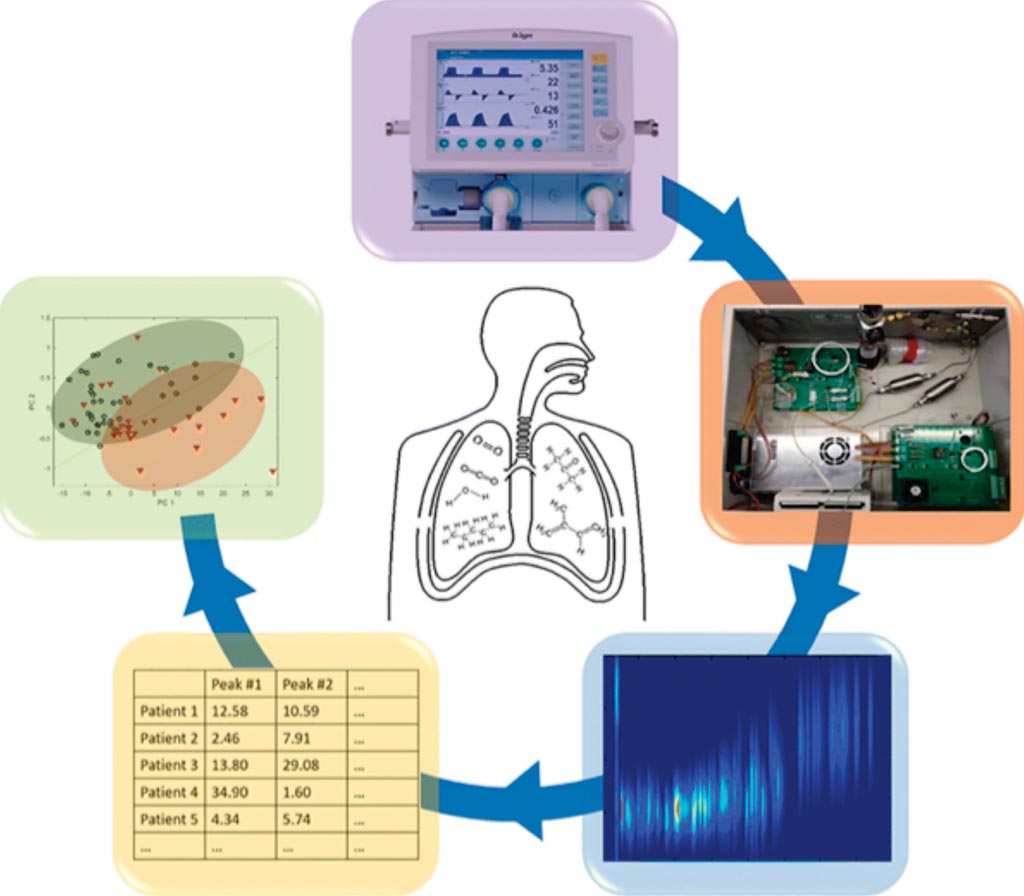Portable Monitor Detects Acute Respiratory Distress Syndrome
By LabMedica International staff writers
Posted on 22 Aug 2019
Acute respiratory distress syndrome (ARDS) is the most severe form of acute lung injury, responsible for high mortality and long-term morbidity. As a dynamic syndrome with multiple etiologies, its timely diagnosis is difficult as is tracking the course of the syndrome.Posted on 22 Aug 2019
Therefore, there is a significant need for early, rapid detection and diagnosis as well as clinical trajectory monitoring of ARDS. Timely diagnosis and tracking of ARDS are very challenging because the condition can alter and progress rapidly and has several possible causes.

Image: Rapid breath analysis for acute respiratory distress syndrome diagnostics using a portable two-dimensional gas chromatography device (Photo courtesy of University of Michigan).
Scientists at the University of Michigan (Ann Arbor, MI, USA) have developed a portable breath analyzer that can accurately and rapidly detect ARDS. The device promises to increase rates of survival and reduce healthcare costs for people with the potentially life threatening lung condition. They tested the technology on 48 volunteers who were receiving treatment at the University of Michigan hospital. Of the volunteers, 21 had ARDS and the others served as controls.
The device designed by the team was a fully automated portable two-dimensional gas chromatography device with high peak capacity (> 200 at the resolution of 1), high sensitivity (sub-ppb), rapid analysis capability (~ 30 minutes) and made in-house for on-site analysis of patients’ breath. The technology in the device uses gas chromatography to analyze nearly 100 molecules in exhaled breath. It captures a sample of breath through a tube that connects to a mechanical ventilator's exhalation port.
An algorithm based on machine learning, principal component analysis (PCA), and linear discriminant analysis (LDA) was developed. As compared to the adjudications done by physicians based on the Berlin criteria, the device and algorithm achieved an overall accuracy of 87.1% with 94.1% positive predictive value and 82.4% negative predictive value. The results of the analysis allowed doctors not only to test for ARDS but also to determine how far advanced the condition is. The device can also monitor treatment progress after diagnosis.
The scientists concluded that the high overall accuracy and high positive predicative value suggest that the breath analysis method can accurately diagnose ARDS. The ability to continuously and non-invasively monitor exhaled breath for early diagnosis, disease trajectory tracking, and outcome prediction monitoring of ARDS may have a significant impact on changing practice and improving patient outcomes. The study was published on August 1, 2019, in the journal Analytical and Bioanalytical Chemistry.
Related Links:
University of Michigan













